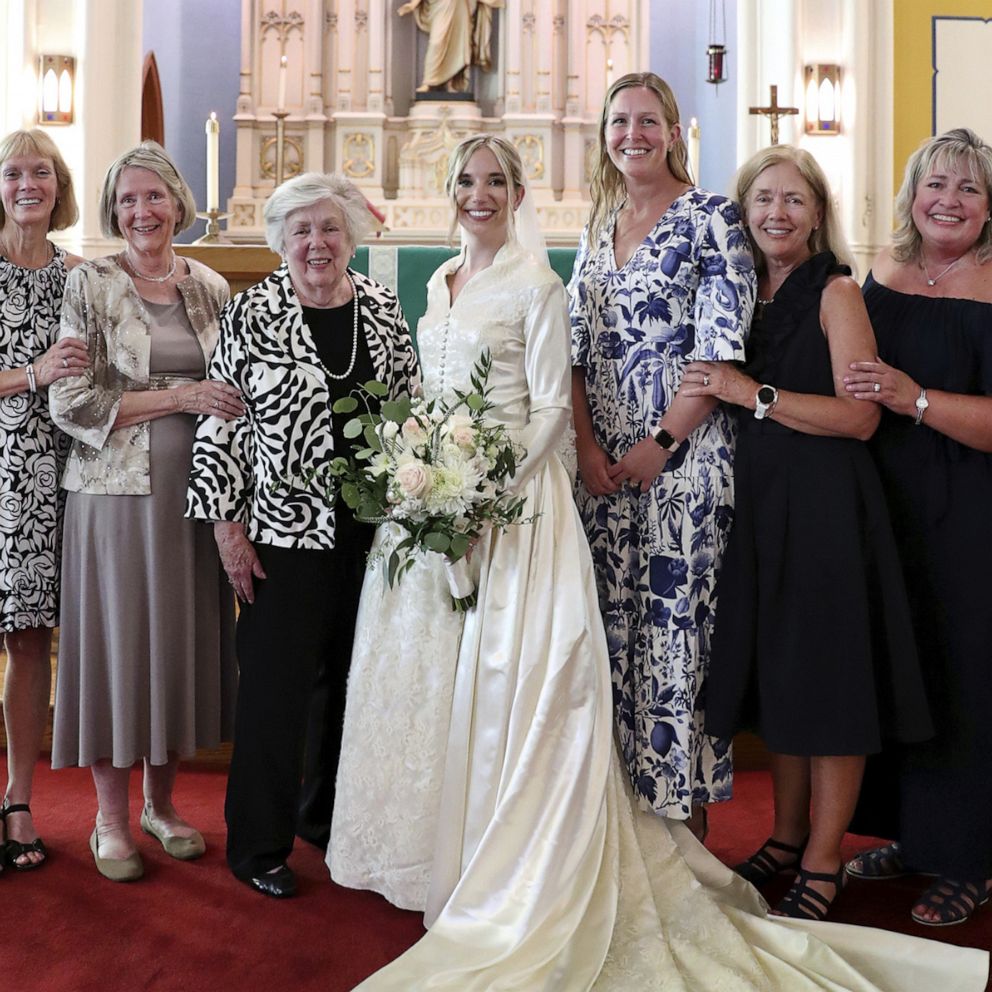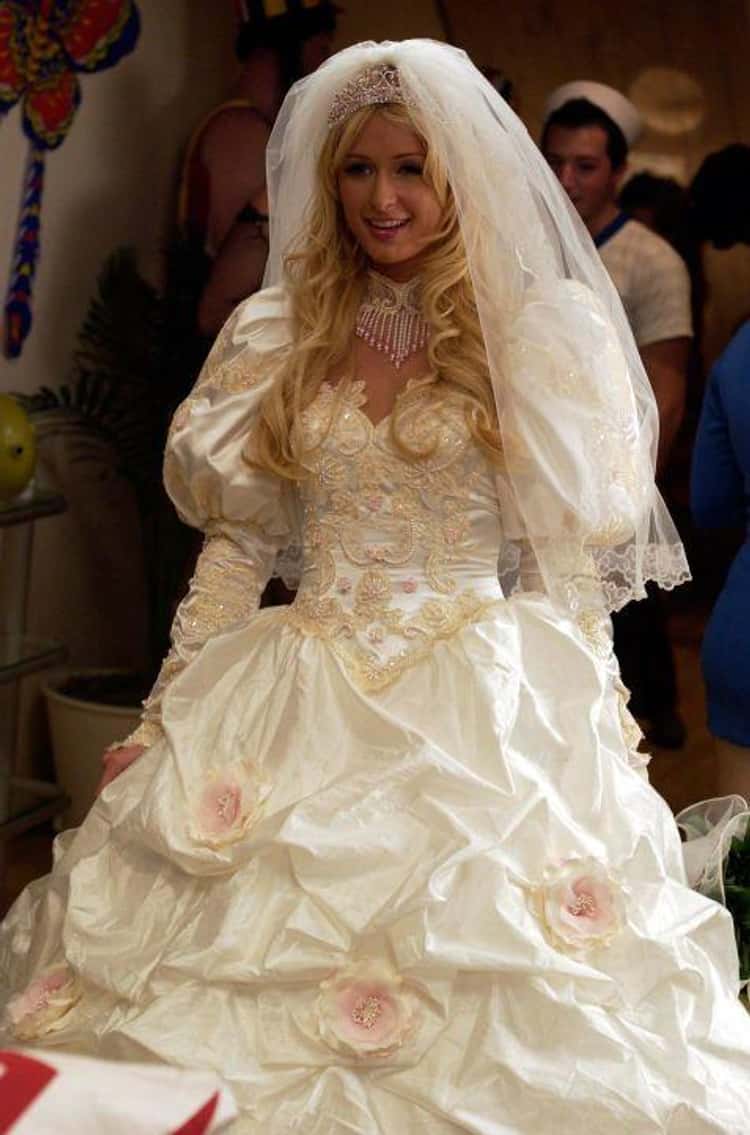The Worst Bridesmaid Dresses: A Comprehensive Guide To Avoiding Fashion Disasters
Choosing bridesmaid dresses is one of the most important decisions in wedding planning. However, not all bridesmaid dresses are created equal, and some can be downright disastrous. In this article, we'll explore the worst bridesmaid dresses, providing insights into what makes a dress unsuitable and offering tips on how to avoid these fashion pitfalls.
Weddings are a celebration of love, but they can also be a minefield of fashion faux pas. One of the biggest challenges brides face is selecting bridesmaid dresses that are stylish, flattering, and universally loved by the wedding party. Unfortunately, some dresses fall short of these expectations, leading to awkward moments and unhappy bridesmaids.
Understanding the characteristics of the worst bridesmaid dresses is crucial for anyone planning a wedding. By learning what to avoid, brides can ensure their wedding day is filled with elegance and harmony, rather than fashion disasters. In this article, we’ll delve into the details of what makes a bridesmaid dress problematic and provide actionable advice for selecting the perfect attire for your wedding party.
Read also:Aishah Sofey Coomer The Rising Star In The Spotlight
Table of Contents
- Introduction
- Defining the Worst Bridesmaid Dresses
- Common Mistakes in Choosing Bridesmaid Dresses
- Color Selection: The Key to Success or Failure
- Fit and Flare: Why Fit Matters
- Fabric Choices That Can Make or Break a Dress
- Design Trends to Avoid
- Budget Considerations and Hidden Costs
- Tips for Avoiding Bridesmaid Dress Disasters
- Exploring Alternatives to Traditional Bridesmaid Dresses
- Conclusion
Defining the Worst Bridesmaid Dresses
When it comes to the worst bridesmaid dresses, the term refers to outfits that fail to meet the expectations of comfort, style, and flattery. These dresses often leave bridesmaids feeling uncomfortable, unattractive, or even embarrassed. The reasons for this vary, but common culprits include poor fit, unflattering colors, and inappropriate designs.
Characteristics of the Worst Bridesmaid Dresses
Some of the key characteristics of the worst bridesmaid dresses include:
- Unflattering Silhouettes: Dresses that accentuate the wrong areas or don't fit properly can make bridesmaids feel self-conscious.
- Poor Fabric Choices: Fabrics that are too shiny, itchy, or unbreathable can lead to discomfort and dissatisfaction.
- Inappropriate Colors: Colors that clash with skin tones or are overly bright can be unflattering and distracting.
By understanding these characteristics, brides can make more informed decisions when selecting bridesmaid dresses.
Common Mistakes in Choosing Bridesmaid Dresses
One of the biggest challenges in choosing bridesmaid dresses is avoiding common mistakes that lead to dissatisfaction. Below are some of the most frequent errors brides make when selecting attire for their wedding party.
Forcing a Uniform Look
While uniformity can create a cohesive aesthetic, forcing all bridesmaids to wear the exact same dress can backfire. Bridesmaids come in different shapes and sizes, and what works for one may not work for another. Allowing bridesmaids to choose from a range of styles within a color palette can help ensure everyone feels comfortable and confident.
Ignoring Personal Preferences
Every bridesmaid has her own style and comfort level. Ignoring these preferences can lead to resentment and unhappiness. Consulting with bridesmaids about their preferences can help ensure they feel valued and respected.
Read also:Unraveling The Mysteries Of The Dilaurentis Family Tree A Comprehensive Guide
Choosing Based on Trends
Trends come and go, and what’s fashionable today may look dated tomorrow. Opting for classic styles ensures the bridesmaid dresses will remain timeless and elegant.
Color Selection: The Key to Success or Failure
Color plays a crucial role in the success or failure of bridesmaid dresses. Choosing the wrong color can lead to unflattering results, while selecting the right shade can enhance the overall look of the wedding party.
Factors to Consider When Choosing Colors
When selecting colors for bridesmaid dresses, consider the following:
- Skin Tone Compatibility: Ensure the chosen color complements the skin tones of all bridesmaids.
- Wedding Theme: Align the color with the overall theme and color scheme of the wedding.
- Seasonal Appropriateness: Choose colors that suit the season of the wedding, such as pastels for spring or rich hues for fall.
By carefully considering these factors, brides can avoid color-related disasters and create a harmonious look for their wedding party.
Fit and Flare: Why Fit Matters
A well-fitted dress is essential for ensuring bridesmaids feel comfortable and confident. Ill-fitting dresses can lead to discomfort and distraction, detracting from the overall elegance of the wedding party.
Tips for Ensuring a Perfect Fit
Here are some tips for achieving the perfect fit:
- Measure Accurately: Take precise measurements to ensure the correct size is chosen.
- Allow for Alterations: Provide enough time for alterations to be made if necessary.
- Consider Body Types: Choose styles that flatter different body types, such as A-line, empire waist, or sheath dresses.
By prioritizing fit, brides can ensure their bridesmaids look and feel their best on the big day.
Fabric Choices That Can Make or Break a Dress
The fabric of a bridesmaid dress can significantly impact its overall appeal. Choosing the wrong fabric can lead to discomfort, while selecting the right material can enhance the elegance of the outfit.
Popular Fabric Options
Some of the most popular fabric options for bridesmaid dresses include:
- Satin: Luxurious and elegant, satin is a classic choice for formal weddings.
- Tulle: Lightweight and airy, tulle is ideal for whimsical or bohemian-themed weddings.
- Chiffon: Soft and flowing, chiffon is perfect for outdoor or summer weddings.
Understanding the properties of different fabrics can help brides make informed decisions when selecting bridesmaid dresses.
Design Trends to Avoid
While fashion trends can inspire creativity, some trends are best avoided when it comes to bridesmaid dresses. Below are some design trends that often lead to dissatisfaction.
Overly Elaborate Designs
Dresses with excessive embellishments, such as heavy beading or intricate patterns, can overwhelm the overall look of the wedding party. Opting for simpler designs ensures the focus remains on the bride.
Outdated Silhouettes
Some silhouettes, such as empire waists or dropped shoulders, can appear dated and unflattering. Choosing classic styles ensures the bridesmaid dresses remain stylish and timeless.
Inappropriate Lengths
Dresses that are too short or too long can be inappropriate for certain venues or cultural norms. Ensuring the length is suitable for the wedding setting helps maintain a polished appearance.
Budget Considerations and Hidden Costs
Budget constraints can sometimes lead to compromises in quality or style when choosing bridesmaid dresses. Understanding potential hidden costs can help brides make more cost-effective decisions.
Factors Affecting Budget
Some factors that can affect the budget for bridesmaid dresses include:
- Shipping and Handling: International shipping or expedited delivery can increase costs.
- Alterations: Alterations can add significant expenses, especially if multiple dresses require adjustments.
- Return Policies: Ensure the retailer has a clear return policy in case the dresses don't fit or meet expectations.
By accounting for these factors, brides can avoid unexpected expenses and stay within their budget.
Tips for Avoiding Bridesmaid Dress Disasters
Avoiding bridesmaid dress disasters requires careful planning and consideration. Below are some practical tips for ensuring a successful selection process.
Involve the Bridesmaids
Involving bridesmaids in the decision-making process can help ensure everyone feels heard and valued. Consider hosting a dress selection session where bridesmaids can provide input on styles and colors.
Set Clear Expectations
Clearly communicate expectations regarding budget, style, and timeline. This helps prevent misunderstandings and ensures everyone is on the same page.
Seek Professional Advice
Consulting with a professional stylist or wedding planner can provide valuable insights and guidance when selecting bridesmaid dresses. Their expertise can help avoid common pitfalls and ensure a successful outcome.
Exploring Alternatives to Traditional Bridesmaid Dresses
For brides looking to break away from traditional bridesmaid dresses, there are several alternative options to consider. These alternatives can add a unique and personalized touch to the wedding party's attire.
Modern Alternatives
Some modern alternatives to traditional bridesmaid dresses include:
- Separates: Allowing bridesmaids to mix and match tops and skirts can create a cohesive yet individualized look.
- Suits or Jumpsuits: For a more contemporary aesthetic, consider suits or jumpsuits in complementary colors.
- Colorful Accessories: Adding pops of color through accessories, such as sashes or scarves, can unify the wedding party without requiring identical dresses.
Exploring these alternatives can help create a wedding party look that reflects the bride's personal style and preferences.
Conclusion
Selecting bridesmaid dresses is a critical aspect of wedding planning, and avoiding the worst bridesmaid dresses requires careful consideration and attention to detail. By understanding common mistakes, prioritizing fit and color, and involving bridesmaids in the decision-making process, brides can ensure their wedding party looks and feels their best.
We encourage readers to share their thoughts and experiences in the comments section below. Your feedback can help others navigate the challenges of bridesmaid dress selection. Additionally, explore other articles on our site for more wedding planning tips and inspiration. Together, let's make every wedding day a celebration of love and elegance!


